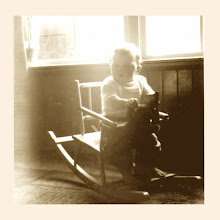 There is of course only one real Balaké, and that's Amadou Traoré dit Balaké.
There is of course only one real Balaké, and that's Amadou Traoré dit Balaké. To my surprise I have not seen a posting of perhaps his most 'appealing' album: "Amadou Balaké à New York" from 1979. And by "appealing" I mean to western audiences. This album has it all: a good variety of styles, covers of famous songs, a dose of humour, a splashing of dramatics.
It starts with a brilliant follow-up to Balaké's very succesful "Whisky Magnin". This time the topic is not drink but drugs. "Yamba" translates as "happiness", but in this case it is the nickname for "ndaay" (or "daaj") or marijuana. "I can't eat without yamba, I can no longer sleep without yamba, I can no longer work without yamba, I can't talk without yamba". Despite the wordplay with yamba/happiness the tone is more serious than in "Whisky Magnin". Balaké mocks and attacks the young and strong "capable of achieving things for the progress of Africa" for their dependency of the drug.
The second track, "They Loule", has some remarkable similarities with the track "4V" by Les Ambassadeurs Internationaux (posted here and here), which was also recorded in Abidjan, but a year earlier. My guess is that both songs have the same source.
The greatest mystery in the third track, "Ligida Ranba", is in the title (which may suggest that we are dealing with a version of the B-side of CVD 46). Marketing-wise I can't see the purpose of trying to hide that this is a version of the Cuban classic "El Manisero". But one can rely on Balaké to give even this ultimate example of world music his own authentic Balaké flavouring.
 The B-side of the album opens with a dramatic 'slow' "Yele". Inimitably Balaké, shouting, almost roaring, with his ever-present sense for the anecdotal detail.
The B-side of the album opens with a dramatic 'slow' "Yele". Inimitably Balaké, shouting, almost roaring, with his ever-present sense for the anecdotal detail. This is followed by a track in which I suppose you will have some problems recognising the Horoya Band's hit (from Discothèque 74 - SLP 48) "Sasilon". Nevertheless it is a - admittedly cleverly disguised - version, covered in a thick and creamy Balaké sauce (or maybe I should write "salsa").
The last track, "Awa Yiriga", seems to be a reference to songs of the (at that moment not too distant) past. Songs like the ones on the "Taximen" and "Super Bara Kono Mousso" albums of just a year before. Personally I find this my least favourite track, as the arrangment just does not seem to fit with the song.
Sacodis LS 22-79
As an extra special treat I have a track recorded in 1994 in Ouagadougou, of a performance of Amadou Balaké in the local Harlem Bar. It is only one song, and he had worked a lot that day and had - as he claims - "a handicapped voice", but still his singing in this song "Maderi" is fantastic. I am not sure what the joke of the announcer about Balaké spending twenty years in Mecca is about; for some reason, just by looking at him, I can't see Balaké as a devout muslim......
The recording and the wonderful photo were made by Rob Lokin.
Maderi (Harlem Bar, Jan.26, 1994)
EDIT: April 3, 2010: As Aduna (see comments) correctly points out, the titles of two tracks appear to have been switched. The version of "El Manisero" is called "Awa Yiriga", and the last track should be "Ligida Ranba" (and it still doesn't sound like "Ligida Remba" from CVD 46...).





























